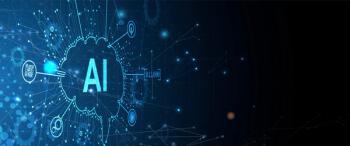
CMS targets fraudulent health insurance enrollments in new rule for ACA exchanges
Key Takeaways
- The new rule targets fraudulent enrollments in ACA health insurance plans, aiming to enhance oversight and accountability while reducing premiums by approximately 5%.
- An estimated 725,000 to 1.8 million people may lose coverage, with losses concentrated in nine states with high improper enrollment rates.
HHS Secretary RFK Jr. announces changes to cut down on improper enrollments.
A new
Meanwhile, Health and Human Services Secretary Robert F. Kennedy Jr. and CMS Administrator Mehmet Oz, MD, MBA, are scheduled to hold a press conference today “to discuss a breakthrough in health insurance that will improve access to care for millions of Americans.”
Kennedy and Oz, MD announced the new 2025 Marketplace Integrity and Affordability Final Rule that “restores oversight, strengthens accountability, and ensures taxpayer dollars are used only for those who are truly eligible.” They called it a major rule that will lower health insurance premiums by approximately 5% on average.
“We are strengthening health insurance markets for American families and protecting taxpayer dollars from waste, fraud, and abuse,” Kennedy said in the
Enrollment: legitimate or fraudulent?
Kennedy and Oz said the heart of the issue is enrollment in ACA-created health insurance plans. Since the COVID-19 pandemic, the administration of President Joe Biden touted
But with greater premium subsidies and fewer verification processes, fraudulent enrollment has boomed. Last year, up to 5 million people may have been
“CMS is restoring integrity to ACA Exchanges by cracking down on fraud, protecting American taxpayer dollars, and ensuring coverage is there for those who truly need it,” Oz said in the news release. “This is about putting patients first, stopping exploitation of the system, and realigning the program with the values of personal responsibility and fiscal discipline.”
Effects on patients
Under the rule changes, CMS estimated 725,000 to 1.8 million people could lose health insurance coverage. The rule goes into effect for the entire country, but it said coverage losses are expected to be concentrated in nine states where erroneous and improper enrollment is most noticeable: Alabama, Florida, Georgia, Mississippi, North Carolina, South Carolina, Tennessee, Texas and Utah.
“An individual who loses coverage may be required to incur additional expense to obtain coverage or may go uninsured,” the rule said. “An increase in the rate of uninsurance may impose greater burdens on the health care system through strain on emergency departments, additional costs to the federal government and to states to provide limited Medicaid coverage for the treatment of an emergency medical condition, and may cause an overall reduction to labor productivity.”
Even so, CMS has “strong reason to believe” people who lose coverage may represent improper enrollments. The federal government will save money and premiums should decrease, according to plans.
The rule changes could result fewer people with health insurance coverage because enrollment will be less consumer-friend, said Larry Levitt, KFF executive vice president for health policy.
“I think the combination of the shorter open enrollment period and the more complex income verification rules will result in more people falling through the cracks,” Levitt said in an article by
Health insurance recent history
Earlier this year, CMS published the draft 2025 Marketplace Integrity and Affordability rule. That and the final rule published this month described the potential for fraud in health insurance. The new rule included a summary of the last decade or so of federal health insurance rules, starting with the ACA establishment of the American Health Benefit Exchanges for people to buy qualified health plans (QHPs). The plans had high premium costs, so enrollment never reached projected levels, which undermined the competitiveness of the market.
The COVID-19 pandemic spread in 2020, and Congress approved generous subsidies for health insurance in the American Rescue Plan of 2021 and the Inflation Reduction Act of 2022. Subsidies were granted to cover the full premium for people with incomes between 100% and 150% of the federal poverty line.
Kennedy and Oz said the widespread availability of zero-cost premium plans “created the incentive and opportunity for fraudulent and improper enrollments at scale, either by the enrollee’s own doing or by a third party without the enrollee’s knowledge,” the federal rule said. Agents, brokers and web-brokers’ promised cash or gift cards to entice consumers to respond to misleading advertisements; they supplied enough personal information for the agents to enroll the consumers in qualified health plans (QHPs).
That led to a “substantial and unprecedented increase in consumer complaints from people who were unaware that they had been enrolled” in such coverage. That suggests fraud and other improper actions that violate federal rules about the health insurance, said the explanation included in the new federal rule.
What the new rule says
The new rule has provisions that affect costs and timing of signing up for health insurance.
- The rule will standardize the annual open enrollment period starting with the 2027 plan year so that it ends by Dec. 31 for all health insurance exchanges. This will encourage people to maintain year-round health coverage rather than waiting until they get sick to enroll, which helps keep insurance affordable for everyone, according to CMS.
- There will no longer be a prohibition on insurers denying health insurance coverage based on unpaid past-due premiums. Insurers, to the extent permitted by state law, may require payment of initial and past-due premium amounts to start new coverage. “This change will reduce adverse selection and encourage continuous coverage, potentially leading to more stable premiums and fostering a more stable insurance market,” according to CMS.
- CMS is repealing the monthly special enrollment period (SEP) for individuals with projected household incomes at or below 150% of the federal poverty level. Some agents and brokers used that policy to improperly enroll ineligible consumers and perform unauthorized plan switching to gain commissions.
- People qualifying for premium subsidies must verify their income.
- CMS will conduct eligibility verifications for people who enroll during SEPs. This will close loopholes that allowed people to wait to enroll until they needed care, thus improving the risk pool, which can lower premiums for middle-class families not receiving subsidies.
- CMS will reduce advanced payments of the premium tax credit (APTC) by $5 a month for individuals who are auto re-enrolled in fully subsidized plans without eligibility verification. This is meant to ensure consumers are aware of and engaged in their health coverage.
Newsletter
Stay informed and empowered with Medical Economics enewsletter, delivering expert insights, financial strategies, practice management tips and technology trends — tailored for today’s physicians.


















